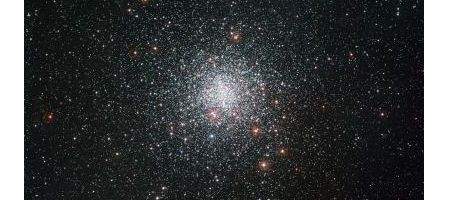One of the most widely-studied of all globular star clusters appears nevertheless to harbor a mystery – a star which apparently possesses the secret of eternal youth.

There are more than 150 globular star clusters dating back to the distant past of the universe orbiting our Milky Way galaxy.
Of these, one of the closest to the Earth is Messier 4, also known as NGC 6121, in the constellation of Scorpius. It contains tens of thousands of stars and can easily be seen through binoculars, close to the bright red star Antares.
Astronomers from the European Southern Observatory (ESO), though, have been examining many of the stars in the cluster individually, using instruments on ESO’s Very Large Telescope. By splitting the light from the stars up into its component colours they can work out their chemical composition and ages.
And some of the latest results are rather surprising. The stars in globular clusters are old, and therefore shouldn’t be rich in the rare element lithium, which is gradually destroyed over the billions of years of a star’s life.
However, one of the stars in Messier 4 appears to still have a large amount of lithium.
“This one star amongst thousands seems to have the secret of eternal youth,” say the researchers. “It has either somehow managed to retain its original lithium, or it has found a way to enrich itself with freshly made lithium.”






